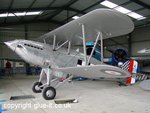Wasn't the Mosquito configured as a fighter?
The first Mosquito was I believe the Photo-recon model, then followed by the fighter version.Yet, when we say 'fighter' it doesn't mean it was capable of dealing with any single-engined enemy fighters - though there were always exceptions. Its main use was as a night-fighter.


